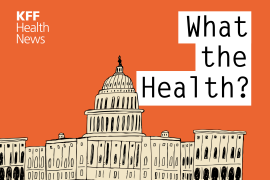In A World Where Workplace Suicide Is Increasing, Colleagues Are Being Taught To Spot Warning Signs
Bringing in mental health counselors to help workers recognize when one of their colleagues may need help is just one of the steps that employers are taking to prevent, prepare for and react to their employees' suicide. In other public health news: loneliness, obesity, a late-in-life career change, and gum disease.
The Wall Street Journal:
With Workplace Suicides Rising, Companies Plan For The Unthinkable
As suicide rates have climbed in recent years, so have instances of employees ending their lives at the workplace. It happened at a Bank of America Corp. call center in New Mexico in November, at a Ford Motor Co. plant outside Detroit in October, and at Apple Inc.’s Cupertino, Calif., headquarters in April 2016. Nationwide, the numbers are small but striking. According to the Bureau of Labor Statistics, suicides at workplaces totaled 291 in 2016, the most recent year of data and the highest number since the government began tallying such events 25 years ago. (Feintzeig, 1/17)
Los Angeles Times:
British Government Targets A Modern Public Health Scourge: Loneliness
The country that put the starch in "stiff upper lip" has made companionship, conversation and human contact a national priority. On Wednesday, British Prime Minister Theresa May announced the creation of a new ministerial portfolio in her Cabinet: combating loneliness. With more than 9 million British adults reportedly experiencing chronic loneliness — and a stack of studies documenting the corrosive health effects of such social isolation — May said it was time that a high-level government official coordinate a "first-ever strategy" to address the scourge. (Healy, 1/17)
Los Angeles Times:
When It Comes To Treating Obesity, Is Fitness More Important Than Fatness?
After nearly four decades of rising body weights in the United States and across the world, medical experts are still casting about for the best way to treat obesity and the diseases that come with it. The answer may depend on which contributes more importantly to ill health: not enough fitness, or too much fatness? (Healy, 1/17)
Stat:
First A Dancer, Now A Doctor: When Medicine Is A Second Career
Many physicians will tell you their path to medicine began in their youth. But for others, a career as a doctor was a later-in-life decision, a change of plans, a new challenge — for whatever reason, career number two. Indeed, recent years have seen an increase in first-year medical residents over the age of 29 in the U.S. and Canada, according to data from the Association of American Medical Colleges. As the number of first-year medical residents has increased overall, the percentage of first-year residents over age 29 also increased — from 35 percent of the total to 35.2 percent from 2012 to 2016. That amounts to about 40,000 additional medical trainees who made the later-in-life switch. (Samuel, 1/18)
WBUR:
Severe Gum Disease Linked To 24 Percent Higher Risk Of Cancer, Tufts Study Finds
Here's yet another reason to floss, and to end the baffling distinction that health insurers make between our mouths and the rest of our bodies: A big study of more than 7,000 people out in the Journal of the National Cancer Institute reports that people found to have severe gum disease had a 24 percent higher risk of cancer compared with those with mild or no gum disease. (Goldberg, 1/17)






